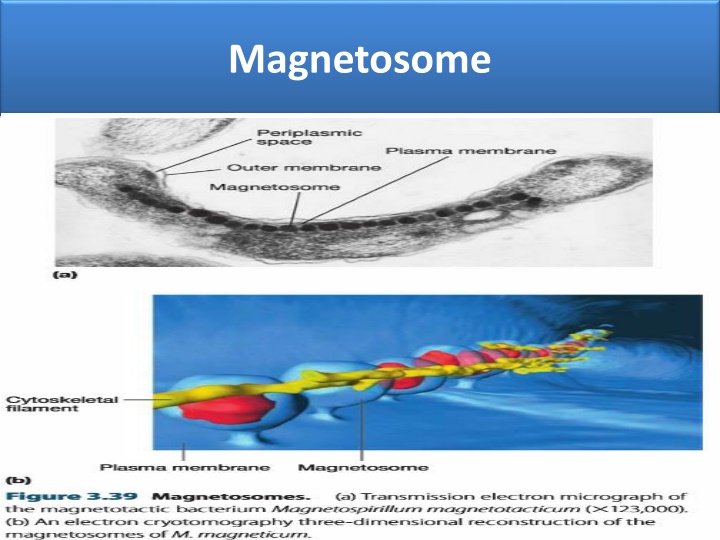
Fascinating Bacterial Inclusions and Protein Complexes
Delve into the intriguing world of bacterial inclusions like magnetosomes and gas vacuoles, as well as protein complexes such as phycobilisomes. Learn how these structures play essential roles in bacterial movement, orientation, and photosynthesis. Discover the unique characteristics and functions of these remarkable cellular components.
Download Presentation

Please find below an Image/Link to download the presentation.
The content on the website is provided AS IS for your information and personal use only. It may not be sold, licensed, or shared on other websites without obtaining consent from the author. If you encounter any issues during the download, it is possible that the publisher has removed the file from their server.
You are allowed to download the files provided on this website for personal or commercial use, subject to the condition that they are used lawfully. All files are the property of their respective owners.
The content on the website is provided AS IS for your information and personal use only. It may not be sold, licensed, or shared on other websites without obtaining consent from the author.
E N D
Presentation Transcript
Inclusions can be used for functions other than storage or as microcompartments. Two of the most remarkable inclusions are gas vacuoles and magnetosomes. Both are involved in bacterial movement. Aquatic magnetotactic bacteria use magnetosomes to orient themselves in Earth's magnetic field. Magnetosomes are intracellular chains of magnetite (Fe304) particles (figure 3.39). They are around 35 to 125 nm in diameter and enclosed within invaginations of the plasma membrane. The invaginations have been shown to contain distinctive proteins that are not found in the rest of the plasma membrane. Each iron particle is a tiny magnet: the Northern Hemisphere bacteria use their magnetosome chain to determine northward and downward directions, and swim down to nutrientrich sediments or locate the optimum depth in freshwater and marine habitats. Other Inclusions: Magnetosome
Conti Magnetotactic Hemisphere generally orient southward and downward, with the same result. For the cell to move properly within a magnetic field, magnetosomes must be arranged in a chain. A cytoskeletal protein called MamK is currently thought to be responsible for establishing a framework upon which the chain can form. bacteria in the Southern
Phycobilisomes II in cyanobacteria, red algae and glaucophytes. Phycobilisomes are protein complexes (up to 600 polypeptides) anchored to thylakoid membranes. of chromophorylated proteins, the phycobiliproteins, and their associated linker polypeptides. Each phycobilisome consists of a core made of allophycocyanin, from which several outwardly oriented rods made of stacked disks of phycocyanin or phycoerythrocyanin. The spectral property of phycobiliproteins are mainly dictated by their linear tetrapyrroles as phycobilins including phycocyanobilin, phycoerythrobilin, phycourobilin and phycobiliviolin. The spectral properties of a given phycobilin is influenced by its protein environment.[ are light harvesting antennae of photosystem They are made of stacks and (if present) phycoerythrin(s) prosthetic groups, which are known
